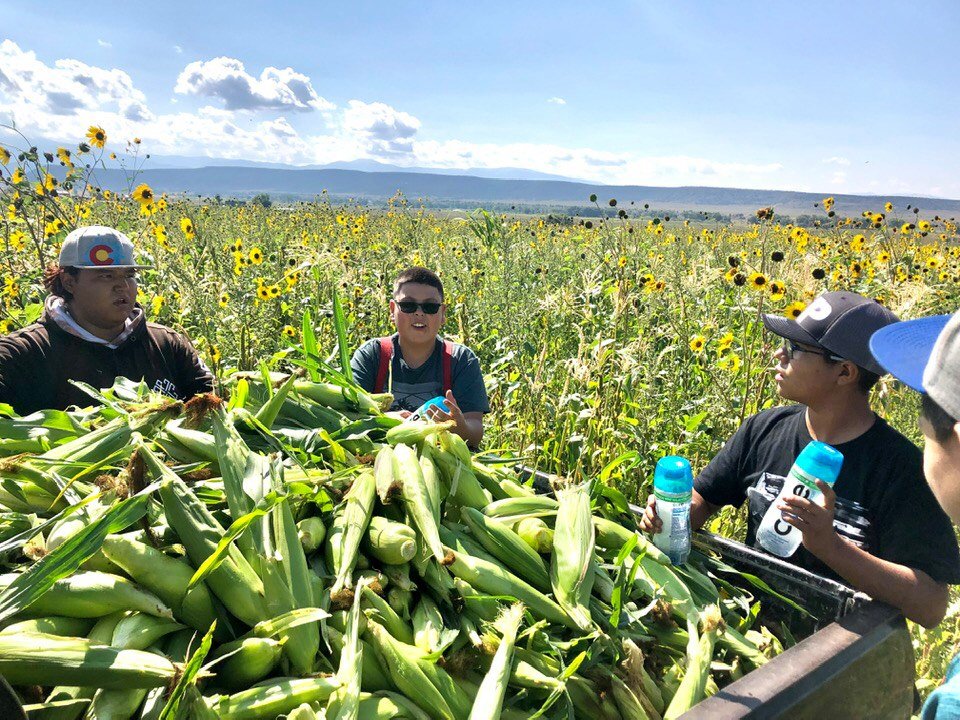
Unlike conventional irrigation systems, the physical design of the acequias mimics natural hydrological and ecological functions, slowly distributing water throughout the landscape through unlined ditches that allow seepage. This “keeps surface and groundwater connected,” Fernald said, recharging the aquifer, reducing evaporation and aridification, enhancing biodiversity, and returning flows to the river.
A Model for Modern Times
Modern management of rivers for commercial agriculture has reduced this connectivity through channelization, levees, and dams. These have stopped streams and rivers from meandering into the floodplain, reducing aquifer recharge and late-season groundwater return.
But the modern system is under stress, as a changing climate reduces mountain snowpack, the main source of Western water. Snowpack acts as a water bank that holds frozen water in the mountains into the spring and releases it throughout the summer. Changing climate patterns also mean shifts in melt patterns, and all of this makes managing water flows through dams a challenge.
“They all share something in common, which is community governance. It’s a water democracy.”
Adding to the uncertainty, the Trump administration is making cuts to the Interior Department’s Bureau of Reclamation, which manages dams, and President Donald Trump has shown a willingness to demand water releases himself, as he did recently with two dams in California, to the consternation of farmers and water managers.
“The acequias and Rio Grande have given life, food, and shelter to people and wildlife, but they’re at risk if we don’t value and better adapt these systems and ecosystems for future conditions,” said Yasmeen Najmi, a planner for Middle Rio Grande Conservancy District, which helps manage irrigation in the valley, including the acequias.
Industrial agriculture exacerbates climate change through its use of synthetic fertilizers, whose production generates significant fossil-fuel emissions, and soil tillage, which disrupts soil’s ability to capture carbon. According to José Maria Martín Civantos, an expert in landscape archaeology at the University of Granada, in Spain, this kind of agriculture is “literally building the desert.”
By contrast, traditional irrigation systems like acequias enhance water quality, expand wildlife habitat, increase soil fertility, and—crucially—support highly productive food systems.
After New Mexico was ceded to the U.S. in 1848, Americans quickly recognized the productivity of acequia agriculture, said Sylvia Rodriguez, an anthropologist and author who grew up in an acequia community in Taos, New Mexico. “American takeover incorporated the acequia system into the state statutes because it was so efficient. Local management is hard to improve on,” she said.
Acequia Soil and Community
The San Luis Valley, along with many other high desert communities, would look markedly different without its acequia. Nestled at the base of the San Juan and Sangre De Cristo mountains, this region is the driest in Colorado, receiving only seven inches of rain annually.

Youth interns from the Move Mountains Project harvesting corn in Colorado’s San Luis Valley. (Photo courtesy of the Move Mountains Project)
In an acequia community, land-based ecological knowledge is passed down through generations along with time-tested practices such as companion cropping, crop rotation, seed-saving, fire ecology, and agroforestry. “Literally all the tenets of regenerative agriculture that were here well before anyone was talking about it,” Peña said. Many of these practices originated with Indigenous farmers.
Sustainable acequia irrigation regenerates the soil horizon, bringing mineral and sediment-rich water from the mountains to the fields. While acequias remain the primary irrigator in northern and central New Mexico, small-scale farming has declined in the region through massive economic restructuring, depopulation of rural areas, and the move from diversified crops to monocultures.
Today, few farmers grow food in the region. “We’ve become an alfalfa monoculture and beef export colony,” said Peña. “We need to transform farming back to polyculture.”





